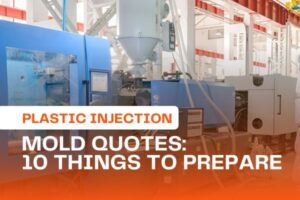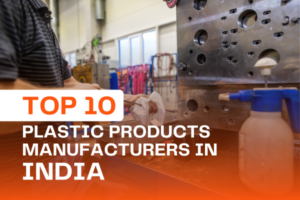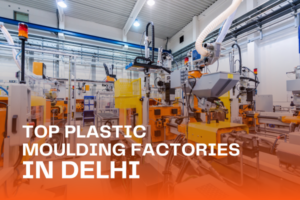What is ABS Plastic?
ABS (Acrylonitrile Butadiene Styrene) plastic is a thermoplastic polymer known for its robustness, glossiness, and resistance to physical impacts and chemical corrosion. Its structure comprises three monomers: acrylonitrile provides chemical and thermal stability, butadiene adds toughness and impact resistance, and styrene offers rigidity and processability. This combination makes ABS an ideal material for a wide range of applications, especially in injection molding, where these properties are crucial for producing durable, high-quality parts with excellent aesthetic appeal.
The ABS Plastic Injection Molding Process
The process of ABS plastic injection molding involves melting ABS plastic pellets to a liquid form and then injecting them under high pressure into a mold cavity. This cavity is shaped as the final desired product. Once the molten ABS fills the mold, it cools and solidifies, taking the shape of the mold. This process is highly efficient for mass-producing complex and detailed parts with precise dimensional tolerances. The cycle times can be very short, allowing for the production of a large number of parts in a relatively short period.
ABS Plastic Pellets for Injection Molding
ABS plastic pellets are the raw material used in the injection molding process. These pellets are formulated to achieve the desired characteristics in the final product, such as color, strength, and flexibility. The quality of the pellets is paramount, as it directly impacts the molding process’s efficiency and the quality of the final product. High-quality pellets ensure consistent melting and flow, resulting in products that are free of defects like warping, sink marks, or voids.
Key Properties of ABS Plastic in Injection Molding
- High Impact Resistance
- ABS plastic is renowned for its toughness and resistance to impacts. This property makes it ideal for manufacturing products that require strength and durability, such as automotive injection molding components, protective casings, and sports equipment.
- Good Mechanical Properties
- ABS combines the strength and rigidity of acrylonitrile and styrene polymers with the toughness of polybutadiene rubber. This unique composition results in excellent mechanical properties, including high tensile strength and stiffness, making it suitable for heavy-duty applications.
- Excellent Dimensional Stability
- ABS parts exhibit outstanding dimensional stability, meaning they maintain their shape and size over a wide range of temperatures and even after exposure to various chemicals. This property is crucial for components that require precise tolerances and fit, such as in engineering applications.
- Thermal Resistance
- While not the most heat-resistant polymer, ABS can withstand temperatures from -20°C to 80°C (-4°F to 176°F), making it suitable for many applications. For environments requiring higher temperature resistance, specific ABS grades have been developed to enhance this property.
- Ease of Processing
- ABS is easy to process through injection molding, thanks to its excellent flow characteristics. It can be molded into complex shapes and fine details, which is beneficial for manufacturing intricate parts. Additionally, ABS does not require drying prior to molding, reducing preparation time and costs.
- Surface Finish and Aesthetics
- ABS parts can be finished to a high-quality appearance, including a high gloss, making it suitable for visible components in consumer products. The material can also be easily coloured through the addition of pigments, offering vast options for aesthetic design.
- Chemical Resistance
- ABS shows a good resistance to many chemicals, including water, salts, acids, alkalis, and some oils. However, it is susceptible to solvents such as acetone or strong acids. This chemical resistance makes it a viable option for containers, housings, and parts exposed to less aggressive chemicals.
- Electrical Insulation Properties
- ABS exhibits good electrical insulation properties, making it a popular choice for electronic housings, electrical enclosures, and other components requiring electrical insulation.
- Recyclability
- ABS plastic is recyclable, which allows for the reuse of scrap material and parts. Recycling ABS contributes to environmental sustainability efforts by reducing waste and conserving resources.
- Cost-Effectiveness
- Compared to other thermoplastics, ABS is relatively cost-effective, especially considering its balance of properties. This makes it an attractive option for a wide range of applications where cost and performance are key considerations.
Advantages of Injection Molding ABS Plastic
Injection molding ABS plastic offers several advantages:
-
- High Production Efficiency: The process is fast and suitable for high-volume production, significantly reducing per-unit cost.
-
- Material Properties: ABS combines strength, rigidity, and thermal stability, making it ideal for both functional and aesthetic parts.
-
- Design Flexibility: Manufacturers can produce parts with complex geometries and fine details, which would be difficult or impossible with other manufacturing processes.
-
- Finish Quality: The surface finish of injection-molded ABS parts is high-quality, often requiring no further treatment.
ABS Plastic Injection Molding Price Factors
The cost of ABS plastic injection molding is influenced by several factors, including the complexity of the part design, the size of the production run, and the specific properties required of the ABS material. Mold design and manufacturing can be significant upfront costs, but these are amortized over the production volume. Operational costs, such as machine time, labor, and material costs, also contribute to the overall price. Selecting the right ABS formulation and efficiently designing the mold and process can help manage costs while achieving the desired part quality.
Applications of Injection Molded ABS Plastic
Injection-molded ABS plastic is used in a variety of applications due to its excellent mechanical properties and versatility. Common uses include automotive components, such as dashboards and bumpers, consumer electronics cases, toys, and household appliances. Its ability to be easily colored and finished to a high gloss makes it a popular choice for visible parts where aesthetics are important.
Frequently Asked Questions
The grade of ABS material used for injection molding largely depends on the specific requirements of the product being manufactured. Generally, injection molding grades of ABS are designed for high fluidity and ease of processing, enabling the production of complex parts with fine details. These grades might also have modifications to enhance certain properties such as impact resistance, heat resistance, and flame retardancy. For instance, high-impact grades are chosen for products that need to withstand mechanical stress or impacts, while flame-retardant grades are used in electrical and electronic applications.
Yes, ABS plastic is heat moldable. It can be softened and shaped into different forms when heated to its glass transition temperature, which is typically between 105°C to 110°C (221°F to 230°F). Upon cooling, ABS retains the shape it was molded into. This property makes ABS highly versatile for various manufacturing processes, including injection molding, thermoforming, and heat bending. However, it is crucial to control the heating process to prevent degradation or warping of the material.
ABS material comes in several grades, each tailored to meet specific application requirements. The main grades include:
General Purpose ABS: Offers a good balance between toughness, rigidity, and processability. It's suitable for a wide range of applications.
-
- High Impact ABS: Enhanced toughness and impact resistance for applications requiring durability, such as protective gear and automotive parts.
-
- High Flow ABS: Designed for molding thin-walled parts with complex geometries, providing smoother flow and better fill.
-
- Flame Retardant ABS: Contains additives that reduce flammability, making it suitable for electronic and electrical applications.
-
- Heat Resistant ABS: Offers improved stability at higher temperatures, suitable for automotive interior parts and appliances.
-
- Transparent ABS: Provides clarity and light transmission properties for applications requiring see-through components, like medical devices and cosmetic packaging.
The strength of ABS compared to polypropylene (PP) depends on the specific type of strength being considered (e.g., tensile strength, impact resistance). Generally, ABS is known for its higher tensile strength and superior impact resistance, making it more suitable for applications requiring toughness and rigidity. On the other hand, polypropylene offers better fatigue resistance, chemical resistance, and elasticity, making it stronger in applications requiring flexibility and resistance to bending stresses. Both materials have their advantages and are chosen based on the requirements of the specific application.
ABS plastic is not only capable of being injection molded but is also preferred for many applications due to its excellent material properties. Its high toughness, impact resistance, and ability to be colored make it a versatile choice for a wide range of products. ABS can be molded into complex shapes and sizes with precise dimensional accuracy, making it suitable for manufacturing components in the automotive, consumer electronics, and toy industries, among others.




